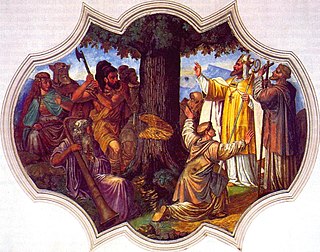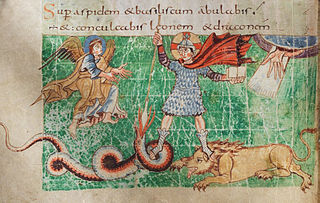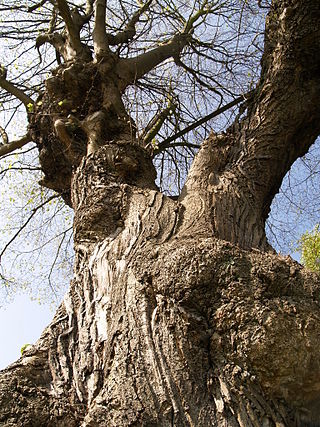Cum vero Hessorum iam multi, catholica fide subditi ac septiformis spiritus gratia confirmati, manus inspositionem acciperunt, et quidem, nondum animo confortati, intermeratae fidei documenta integre perceipere rennuerunt, alii etiam lignis et fontibus clanculo, alii autem aperte sacrificabant; alii vero aruspicia et divinationes, prestigia atque icantationes occulte, alii quidem manifeste exercebant; alii quippe auguria et auspicia intendebant diversosque sacrificandi ritus incoluerunt; alii etiam, quibus mens sanior inerat, omni abeicta gentilitatis profantione, nihil horum commisserunt. Quorum consultu atque consilio roborem quendam mirae magnitudinis, qui prisco paganorum vocabulo appellatur robor Iobis, in loco qui dicitur Gaesmere, servis Dei secum adstantibus succidere temptavit. Cumque, mentis constantia confortatus, arborem succidisset, — magna quippe aderat copia paganorum, qui et inimicum deorum suorum intra se diligentissime devotabant, — sed ad modicum quidem arbore praeciso, confestim inmensa roboris moles, divino desuper flatu exagitata, palmitum confracto culmine, corruit et quasi superni nutus solatio in quattuor etiam partes disrupta est, et quattuor ingentis magnitudinis aequali longitudine trunci absque fratrum labore adstantium apparuerunt. Quo viso, prius devotantes pagani etiam versa vice benedictionem Domino, pristina abiecta maledictione, credentes reddiderunt. Tunc autem summae sanctitatis antistes, consilio inito cum fratribus, ligneum ex supradictae arboris metallo oratorium construxit eamque in honore sancti Petri apostoli dedicavit. [3] | Now at that time many of the Hessians, brought under the Catholic faith and confirmed by the grace of the sevenfold spirit, received the laying on of hands; others indeed, not yet strengthened in soul, refused to accept in their entirety the lessons of the inviolate faith. Moreover some were wont secretly, some openly to sacrifice to trees and springs; some in secret, others openly practiced inspections of victims and divinations, legerdemain and incantations; some turned their attention to auguries and auspices and various sacrificial rites; while others, with sounder minds, abandoned all the profanations of heathenism, and committed none of these things. With the advice and counsel of these last, the saint attempted, in the place called Gaesmere, while the servants of God stood by his side, to fell a certain oak of extraordinary size, which is called, by an old name of the pagans, the Oak of Jupiter. And when in the strength of his steadfast heart he had cut the lower notch, there was present a great multitude of pagans, who in their souls were earnestly cursing the enemy of their gods. But when the fore side of the tree was notched only a little, suddenly the oak's vast bulk, driven by a blast from above, crashed to the ground, shivering its crown of branches as it fell; and, as if by the gracious compensation of the Most High, it was also burst into four parts, and four trunks of huge size, equal in length, were seen, unwrought by the brethren who stood by. At this sight the pagans who before had cursed now, on the contrary, believed, and blessed the Lord, and put away their former reviling. Then moreover the most holy bishop, after taking counsel with the brethren, built from the timber of the tree wooden oratory, and dedicated it in honor of Saint Peter the apostle. [4] | |
















